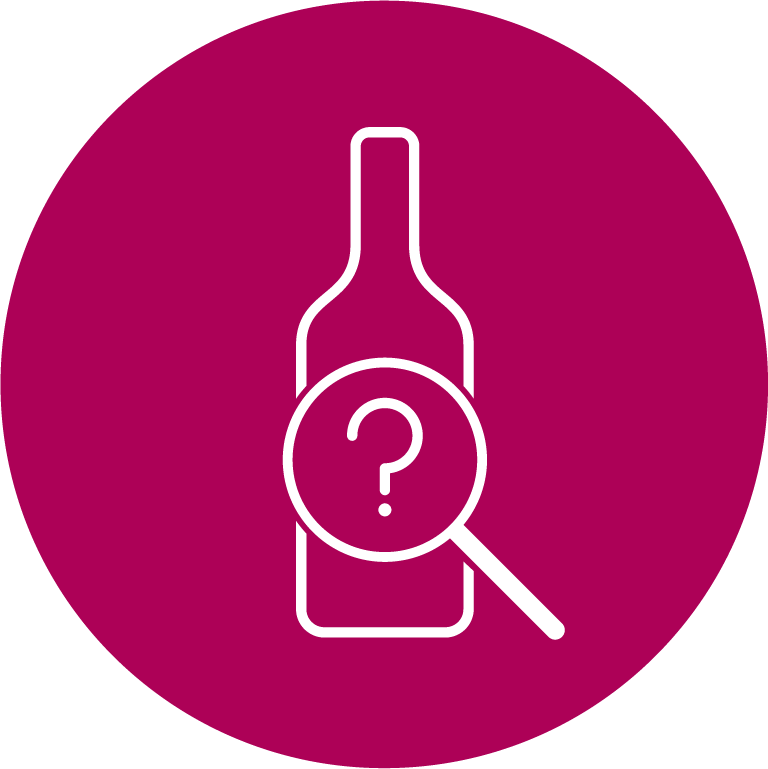A customer recently asked about Decanting ‘rules’ so I’ve put together a few pointers which I hope will be useful, I’ve also added some general guidelines on serving temperatures too.
Decanting has two main purposes: Firstly, it allows the wine to ‘breathe’ – it is this brush with oxygen that helps release many of the aroma/flavours within the wine as well as softening the tannins – this is why, quite often by the time you get to the final glass, it tastes smoother and more rounded. Secondly, it enables any sediment to be removed before you drink the wine which is always a good idea!
What Wines Should I Decant?
Sparkling wines shouldn’t ever be decanted (for obvious reasons) and although it’s not really necessary for many young whites or rosé wines, decanting will be beneficial particularly if you have a complex bottle of white wine – aerating it will allow these flavours to really come to the fore. An hour or so will be fine, but don’t just uncork it and leave it on the table, you need to aerate it by decanting into another container.
Red wines are where decanting really comes into its own, and generally speaking you can decant any red. As a rule of thumb – for younger wines, decant these a couple of hours before you want to drink them, for older wines, a shorter period, perhaps just to remove any sediment that may have been thrown.
Younger wines will have been in the bottle less time so will usually be more stable when exposed to the effects of oxygen, hence they can withstand longer exposure. I would suggest that wines that are particularly tannic or high in acidity will benefit the most from decanting, to soften and round them out a bit. You will also find that wines that have been quite heavily oaked need a bit of time in the decanter to express the fruit behind the oak notes.
Older wines need to be handled more carefully. As these will have been held in bottle for longer, they will be more fragile to oxygen exposure. Thus, the older the wine, the more care that needs to be taken and for particularly old wines, I would probably only do it just prior to serving, purely to remove any bitter sediment that may have dropped out of the wine during its time in bottle. These wines may break up and are best drunk soon after opening.
Fortified wines – Vintage Ports, and Late Bottled Vintage (Unfiltered) should also be decanted – these can throw massive amounts of sediment which you really don’t want to get a mouthful of!
Serving Wine: Suggested Temperatures
How cool should a wine be before serving is very open to conjecture, what is a given though is that the process of chilling wine results in flavours becoming more muted, acidity more pronounced and oak/tannin/alcohol more emphasised.
The cooler the temperature, the crisper and less aromatic the wine becomes, wines that are oaked tend to need less chilling otherwise the oak influence becomes more pronounced at the expense of the fruit, and God forbid you chill a full bodied red, the tannins and astringency will be off the scale.
A lot depends on the colour, style (and quality!) of the wine, the better the wine, the less chilling is a general rule of thumb!
Splitting it out into scale-able categories from ‘Well Chilled’ to ‘Room Temperature’:
‘Well Chilled’ – (roughly 4-6°C). Sweet sparkling wines and sweet wines such as Moscatels and Muscats can take more chilling. I’d suggest Non-Vintage Champagne/Traditional method sparklers at the ‘warmer’ end of this scale.
‘Chilled’ – (from 7-10°C). This category encompasses most white and rose wines, particularly the light bodied (unoaked), aromatic wines. Alsace Riesling, Kiwi Sauvignon Blanc, Vinho Verde at the cooler end of the scale.
‘Lightly Chilled’/’Cellar’ – (10-14°C) This category is the most versatile. Vintage Champagnes (at the cooler end), fuller bodied oaked whites such as White Burgundy as well as some lighter bodied, more aromatic reds at the warmer end of the scale (some New World Pinot Noir, Sicilian reds, Valpolicella for example). Don’t overdo it though.
‘Room Temperature’ – (15-18°C+). Best rule of thumb here is the bigger the wine, the warmer the temperature. Medium bodied reds – perhaps something like a young Rioja (Joven) or red Burgundy should be served around 15-16°C. For the full bodied big reds with loads of oaky tannin – Top end Bordeaux, Northern Rhone, Brunello and Barolo, Rioja Reserva/Gran Reserva and big American Cabernet Sauvignon’s etc Serve these warmer 16-18°C
Ultimately though, these temperatures are just guidelines, personal preference is what’s important. Drink it just how you like it but it’s worth experimenting and seeing what you prefer.

This is exactly what we needed! Sometimes with the older, more expensive wines we can’t seem to drink it quick enough before it loses it’s umph!
Thank you for this perfect guide, it will help us to enjoy wine even more (if that’s possible!!!).
Excellent, glad you found it useful Lindsay. Thanks for the feedback.